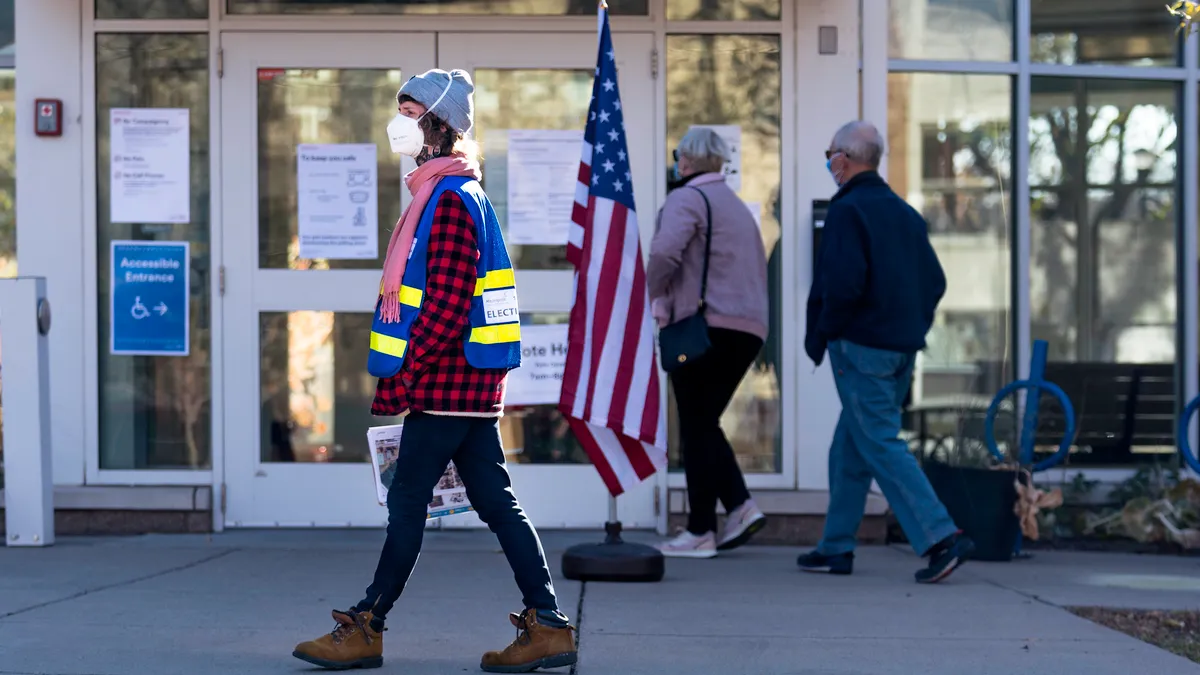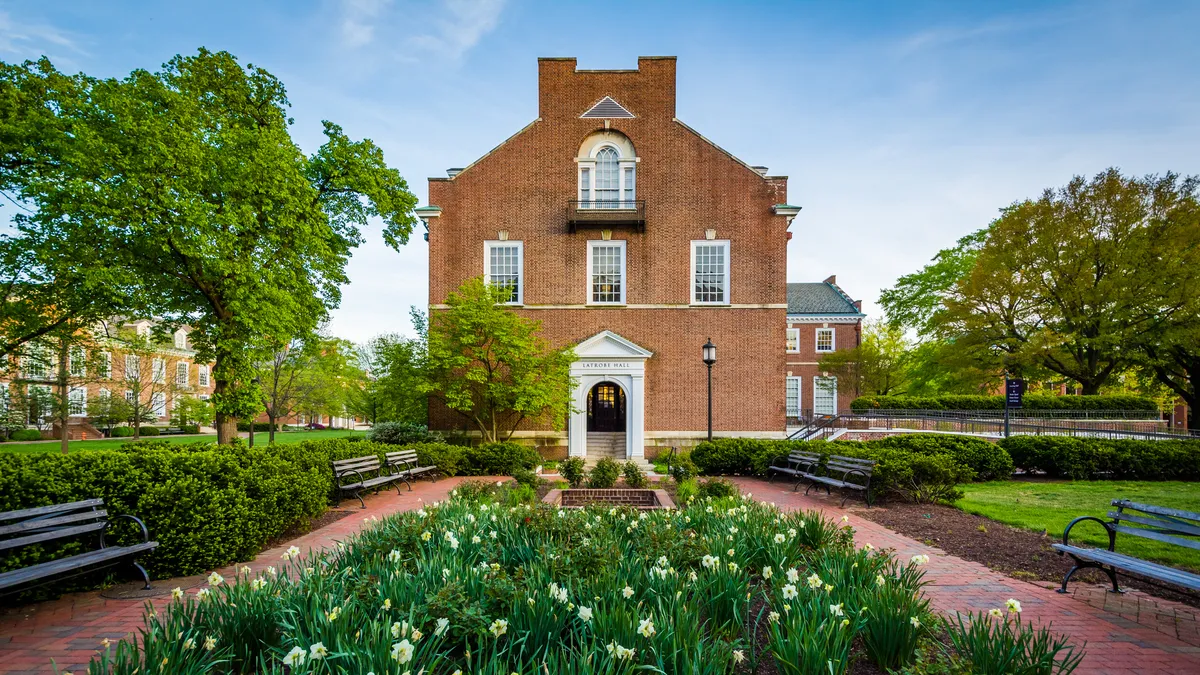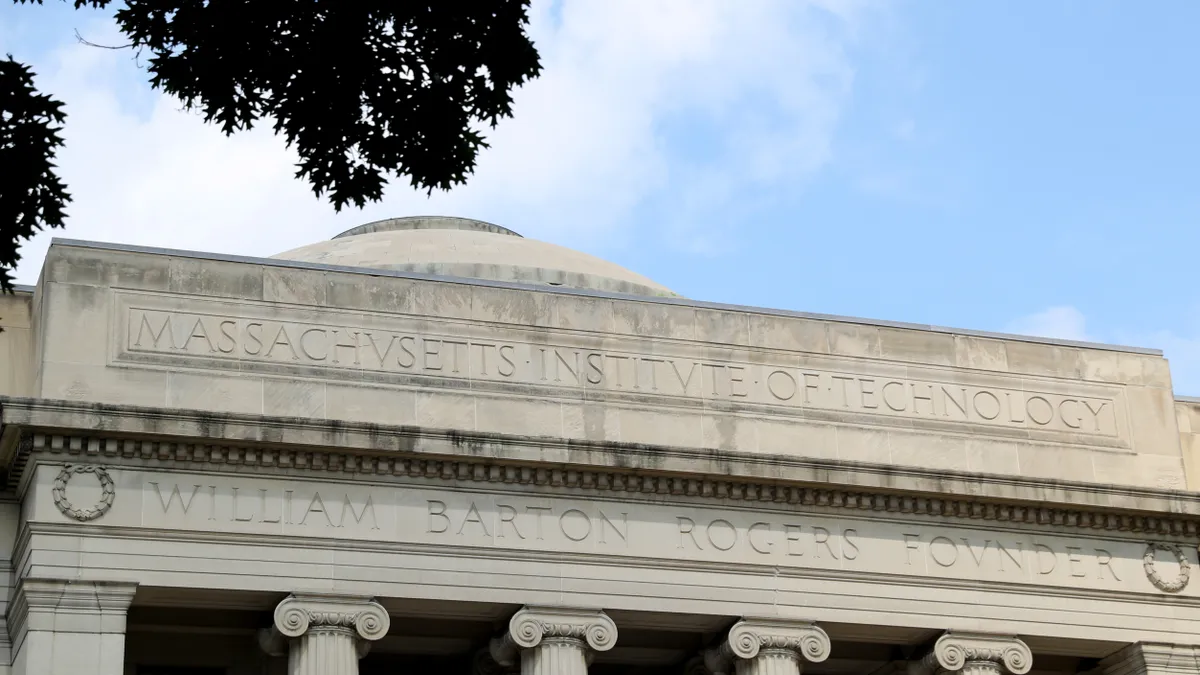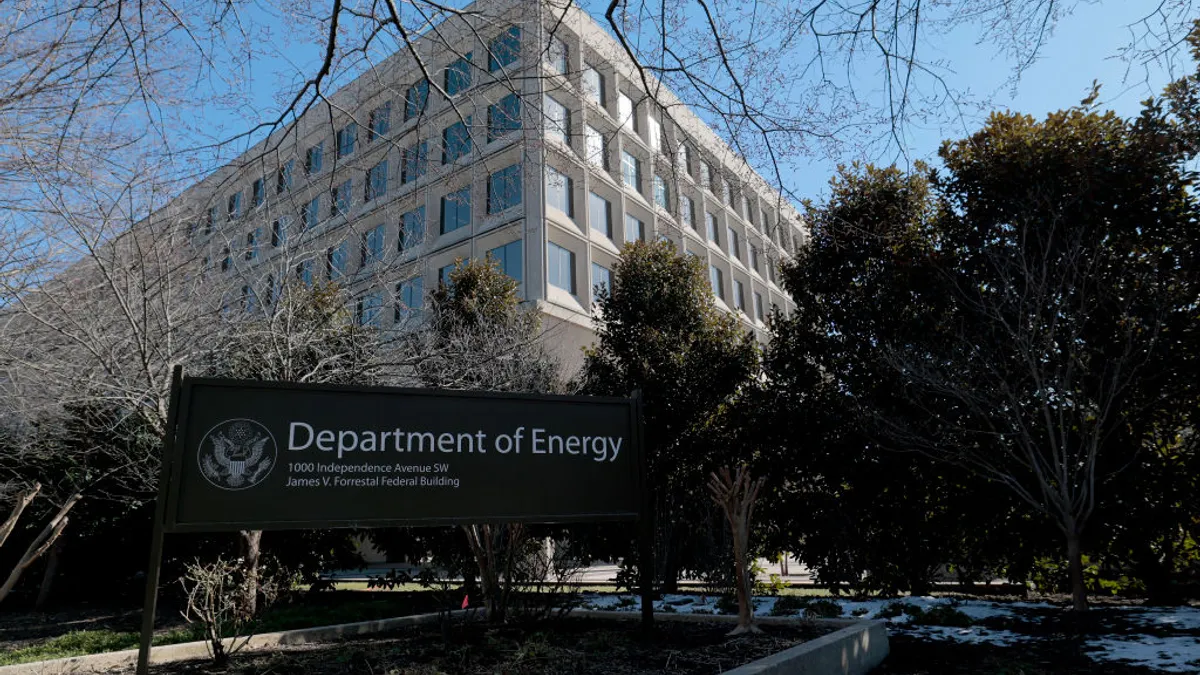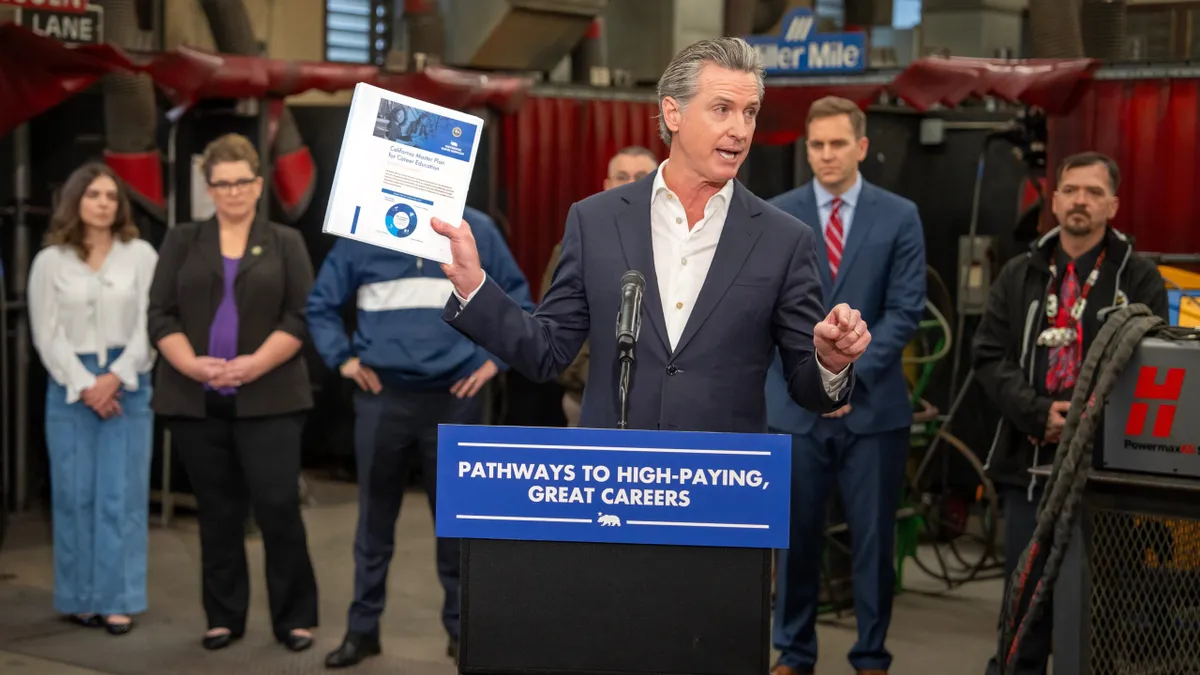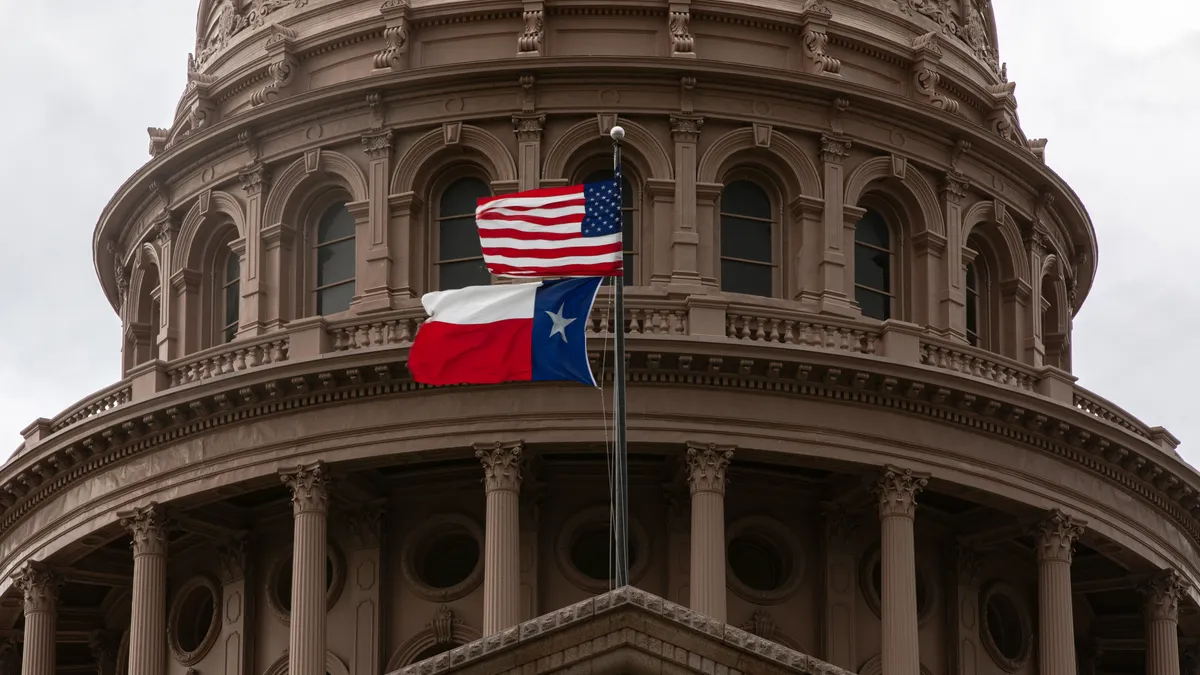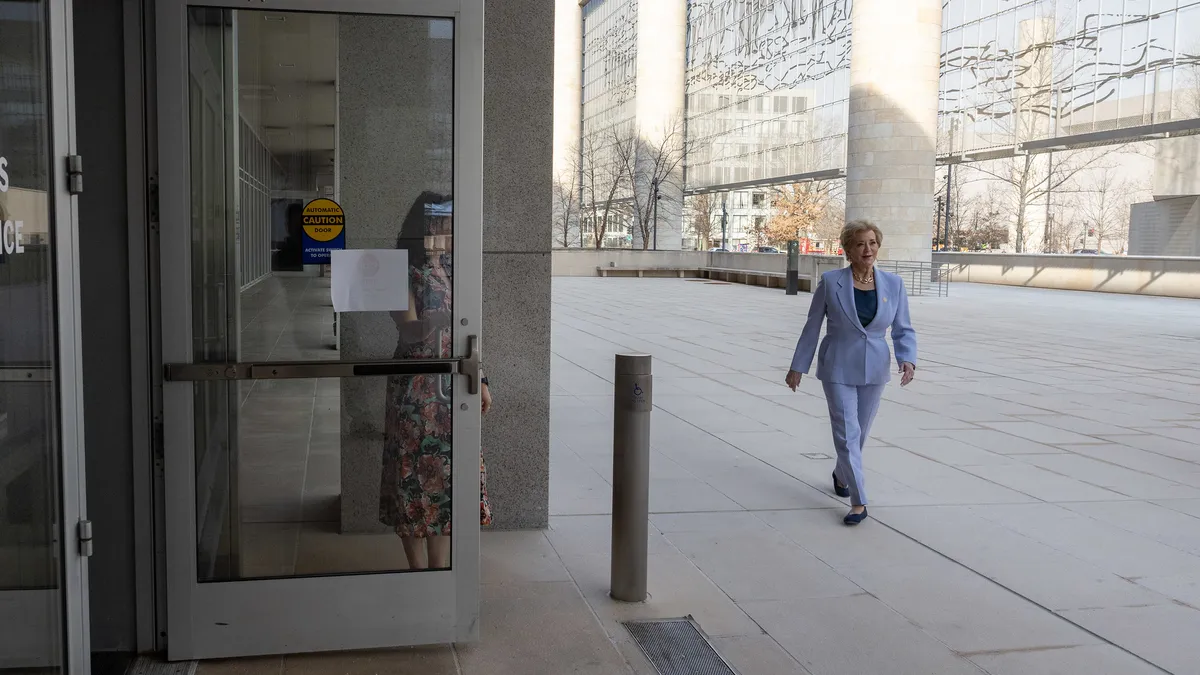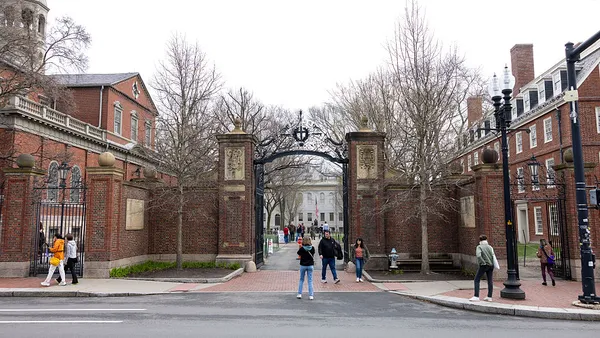The presidential race remains undecided, but state election results show potential changes ahead for pockets of higher education. Still, state-level shifts aren't likely to be widespread, policy and higher ed experts told Education Dive Wednesday.
"This was not a wave election that fundamentally changes the game for politics in state houses nationwide," said Tom Harnisch, vice president for government relations at the State Higher Education Executive Officers Association. Further, there weren't many governorships on the ballots, and most were incumbents that solidly won reelection.
"Since most of these governors are incumbents, (colleges) will know their higher education agenda," he said.
Below, we look at the outcomes of key state leadership votes, as well as ballot measures that stand to open up more funding for institutions. We also point out an area that rolled up more support this cycle and could expand opportunities for higher ed programs and research: cannabis.
Who's leading the states?
Aside from a few key races, the partisan makeup of state legislatures appears to be holding steady, the National Conference of State Legislatures reported Wednesday morning. There are a few anticipated shifts as of press time, however, including Democrats gaining control of at least one legislative chamber in Arizona, which has a Republican governor, and Republicans retaking control of the legislature in New Hampshire, which reelected its Republican governor.
Democrats in North Carolina's legislature, which has a strong hand in its postsecondary affairs, came up short, according to local media reports. That leaves both chambers with a Republican majority. North Carolina's Democratic governor, Roy Cooper, won reelection.
Meanwhile, U.S. Senate seats flipped in Alabama (filled by former college football coach Tommy Tuberville, a Republican), Arizona and Colorado. And Montana's newly elected Republican governor will replace a Democrat, giving the party total control of the state's government.
Changes at the higher ed board
Colorado is adding three new regents to oversee the University of Colorado who are expected to tip the board's balance in favor of Democrats.
In Michigan, voters got to pick two seats each on the governing boards of three of the state's universities. There has been pressure in recent years to switch to a system in which the state's governor appoints board members at those schools, The Associated Press reported. Supporters of the change say it would improve accountability.
Four seats on Nevada's 13-member board of regents were up for grabs this cycle. Voters also weighed in on a proposal that would give the state's legislature more control over its public universities, weakening their autonomy. As of Wednesday morning, slightly more voters had rejected the measure (51%) than had approved it (49%).
And North Dakota voters soundly rejected a ballot measure that would more than double the seats on the state board of higher education, increase term lengths and limit certain public officials from membership.
What else was on the ballot?
California voters denied a proposal to end a ban on affirmative action. You can read our take on that news here. They also appear to have voted down a measure that would change how certain commercial and industrial properties are taxed. Some of the income from Proposition 15 would have gone to community colleges.
Arizona voters were deciding on a measure that would raise income taxes for high-income households and funnel some of the money into career and technical education programs and college-level courses.
And New Mexico voters approved $156.4 million in bonds for certain colleges and other schools in the state. The money would help with campus maintenance and upgrades and support the creation of a new healthcare program building at the University of New Mexico, according to local media reports.
Cannabis got a boost in several states, including New Jersey, an outcome that could put pressure on other nearby states. As Education Dive has previously reported, loosening legal restrictions on medical and recreational use of cannabis stands to open opportunities for colleges to add or expand programs and research in the emerging field.
Paul Seaborn, a professor at the University of Virginia's business school, called the decisions "another small step in a slowly developing move towards more educational opportunities" for colleges with the cannabis industry.
However, most institutions are still primarily concerned about cannabis' status as a federal Schedule I drug, and split federal leadership likely complicates any potential for a change.
What's next for colleges?
That depends on who wins the presidency and which parties prevail in the House and Senate.
"The federal conversation has become more prominent for two reasons," said Justin Ortagus, a higher education professor at the University of Florida. One is a "dire need" for federal relief among colleges in the near term to avoid or offset steep budget cuts as a result of pandemic-related state revenue declines, he said. The American Council on Education has said the sector needs at least $120 billion.
In the long term, he added, the type of federal support for colleges that Democratic candidate Joe Biden is promoting could shift some of the conversation around higher ed funding away from the states. But Biden's free college plan requires schools to cover some of the bill, and experts have said pandemic budget stress could make doing so a challenge.
State tax revenue shortfalls could reach $200 billion by the end of the 2021 fiscal year, according to one analysis.
If Trump wins, Ortagus said, "then state funding becomes increasingly important because the Trump administration has not made the levels of promises for investing in higher education to the extent that the Biden administration has."
Harnisch, of SHEEO, is confident at least one more coronavirus relief package will pass. "The real issue is what do those relief packages look like and how much funding do they have for states and institutions of higher education."



